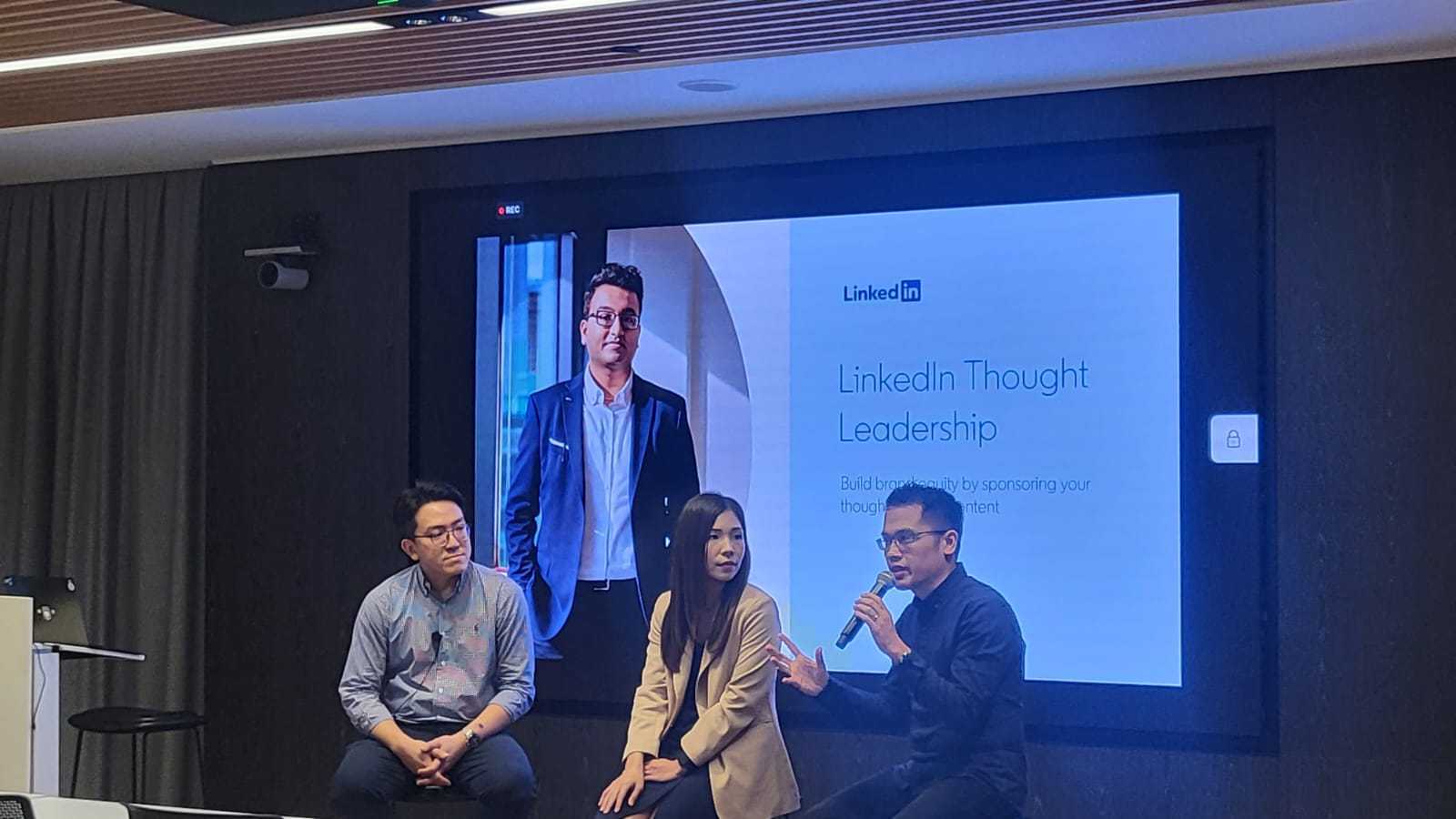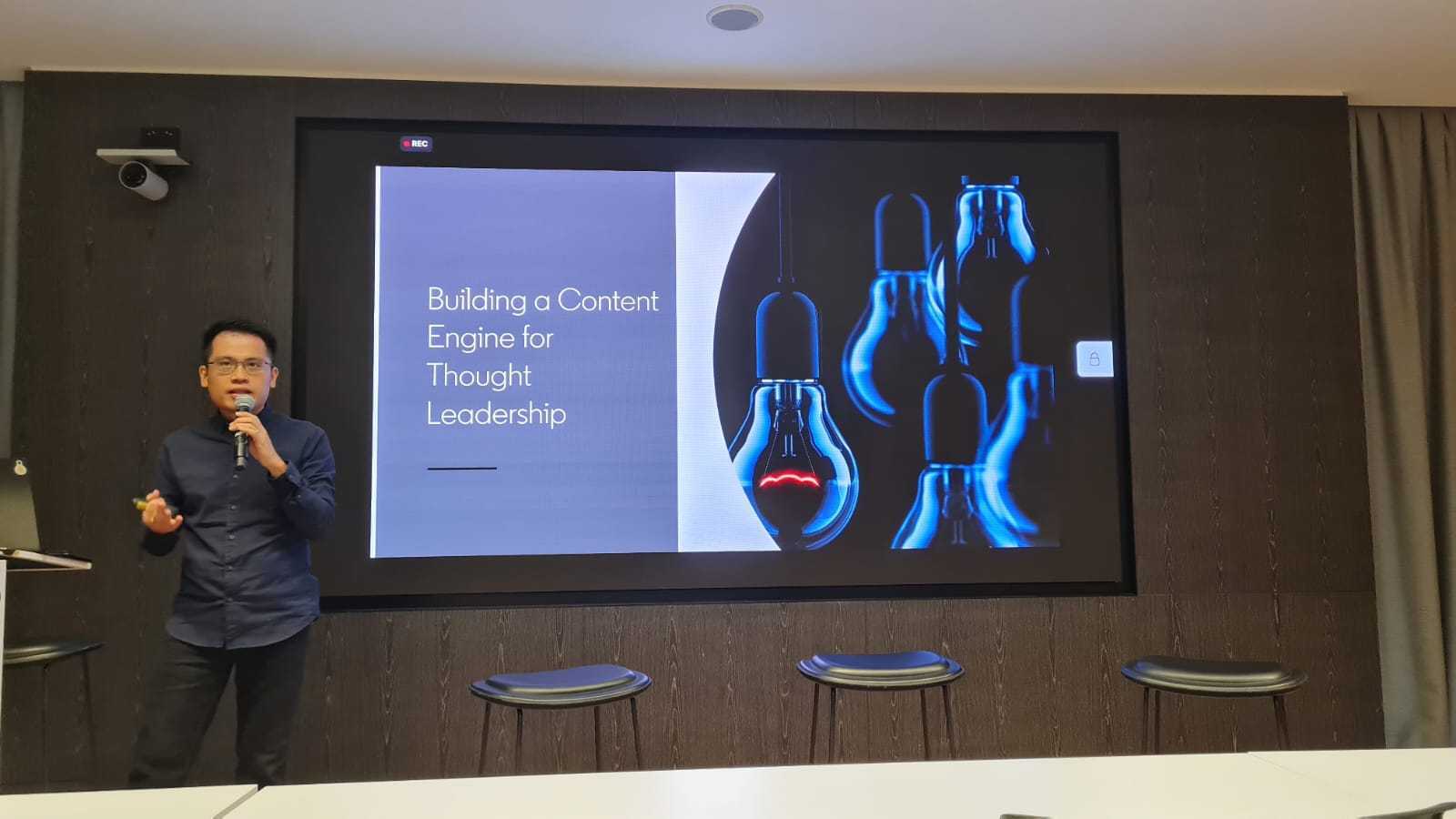In the ever-evolving landscape of digital marketing, LinkedIn’s recent introduction of Thought Leadership Ads fulfils a long-standing wish for our agency— the ability to utilise paid media to enhance executive thought leadership.
This innovative product enables brands to leverage the influence of their top executives and leaders – to further the brand’s thought leadership. Whilst Archetype has been working with C-suite executives to help build their presence on LinkedIn for years now, the ability to amplify thought leadership using paid approaches enables our content to go further, reaching and impacting even more stakeholder groups – from customers and shareholders to potential and existing hires.jul
Last month, we collaborated with LinkedIn to organise an educational session focused on how executives can build thought leadership. I shared about Archetype’s four-step “Magnetic Executive” methodology, and also had the opportunity to engage with Serene Chew, Senior Manager for Strategic Communications at Income Insurance and JohnBosco Ng, Head of New & Emerging Business, for LinkedIn Marketing Solutions, in a fireside chat to discuss the essence of thought leadership.
Here are three takeaways from the session and fireside chat, for those embarking on this journey with your organisation.
Image taken at LinkedIn’s recent #PartnerIn for Success event
#1 Strategic Measurement for Success
While thought leadership is not a recent phenomenon, the perennial struggle for communications professionals is effectively evaluating its impact and balancing the pursuit of long-term goals with the immediate need to show short-term results for satisfying stakeholders and budget questions.
With the understanding that all thought leadership efforts would contribute towards elevating the brand over time, communications professionals could utilise short-term metrics focused on executives’ profile numbers, such as growth, engagement rate and impressions. Products like LinkedIn’s thought leader ads provide more insight, given that insights from the advertising dashboard would enable one to see who was reached, and how they engaged with the content, whilst retaining the ability to retarget them with follow-on content down the line.
These metrics offer valuable insights to make operational tweaks and optimisations to the programme, such as adjusting the content or timing of posts, to ensure that one’s thought leadership is gaining maximum traction.
Crafting a longer-term measurement framework involves evaluating the brand’s association with the topics that executives discuss. Such issues can span from brand values to overarching organisational goals, such as being considered a leader in a particular sector or space. This two-pronged approach ensures that thought leadership initiatives yield immediate results to keep the programme alive, whilst contributing to the long-term health, and growth, of the brand.
#2 Start From Organisational Goals
The introduction of Thought Leadership Ads by LinkedIn marks a significant shift in how executive voices can be amplified in the digital space.
But having to leverage other people in the organisation – especially those who might be the most time-starved – presents a common hurdle faced in getting traction from thought leadership. In almost all the programmes we have run, securing buy-ins from the people that organisations are fronting as thought leaders has been a common challenge. Starting from organisational goals streamlines the process, helping to communicate objectives in a language familiar to executives to help facilitate understanding and quicker buy-in. Such goals can range from becoming a brand or employer of choice.
A well-defined goal simplifies selecting initiatives that work towards achieving that goal. With thought leadership, the strength of the latest offering from LinkedIn is the optimisation of existing resources, making the most of what is already developed and helping it go the extra mile.
#3 Empowering Diverse Voices Whilst Staying United
Once the organisational goals are clear — the next step to building out successful thought leadership programmes is tapping on diverse voices to expand the thought leadership bench.
Thought leadership thrives on new perspectives. It’s about challenging the status quo and introducing concepts that spark discussions. Personal stories enable a person to tell his or her story in a more memorable, relatable, and engaging manner, enabling him or her to be more authentic.. By tapping into a variety of perspectives and experiences, organisations can unlock a wealth of unique narratives.
However, the journey has its challenges. The next most important thing is ensuring that spokespersons for the programme – whilst telling their own unique stories – still present a unified messaging from an organisational standpoint. Having a clear brand purpose and ensuring this is communicated organisation-wide are vital to power the advocates to chart towards the same organisational goal at pace.
Marketing and communications professionals must work closely with their thought leaders for a successful corporate thought leadership programme. Skills in persuasion, stakeholder management, and strategic planning are pivotal to reach and engage audiences.
Navigating ambiguity, securing buy-in from senior leaders, and aligning content with overarching brand objectives can be complex. Yet, organisations can break through these challenges by championing a culture that values diverse voices and experiences and harnesses the true potential of thought leadership.
Today, effective thought leadership isn’t about who can post the most often or be the most visible, but rather, whose message is the most resonant with the audiences and stakeholders. The road to success is first marked by the ability to showcase short-term wins but continue keeping an eye on the long-term goal, allied with diverse and authentic storytelling to help drive messages home.



